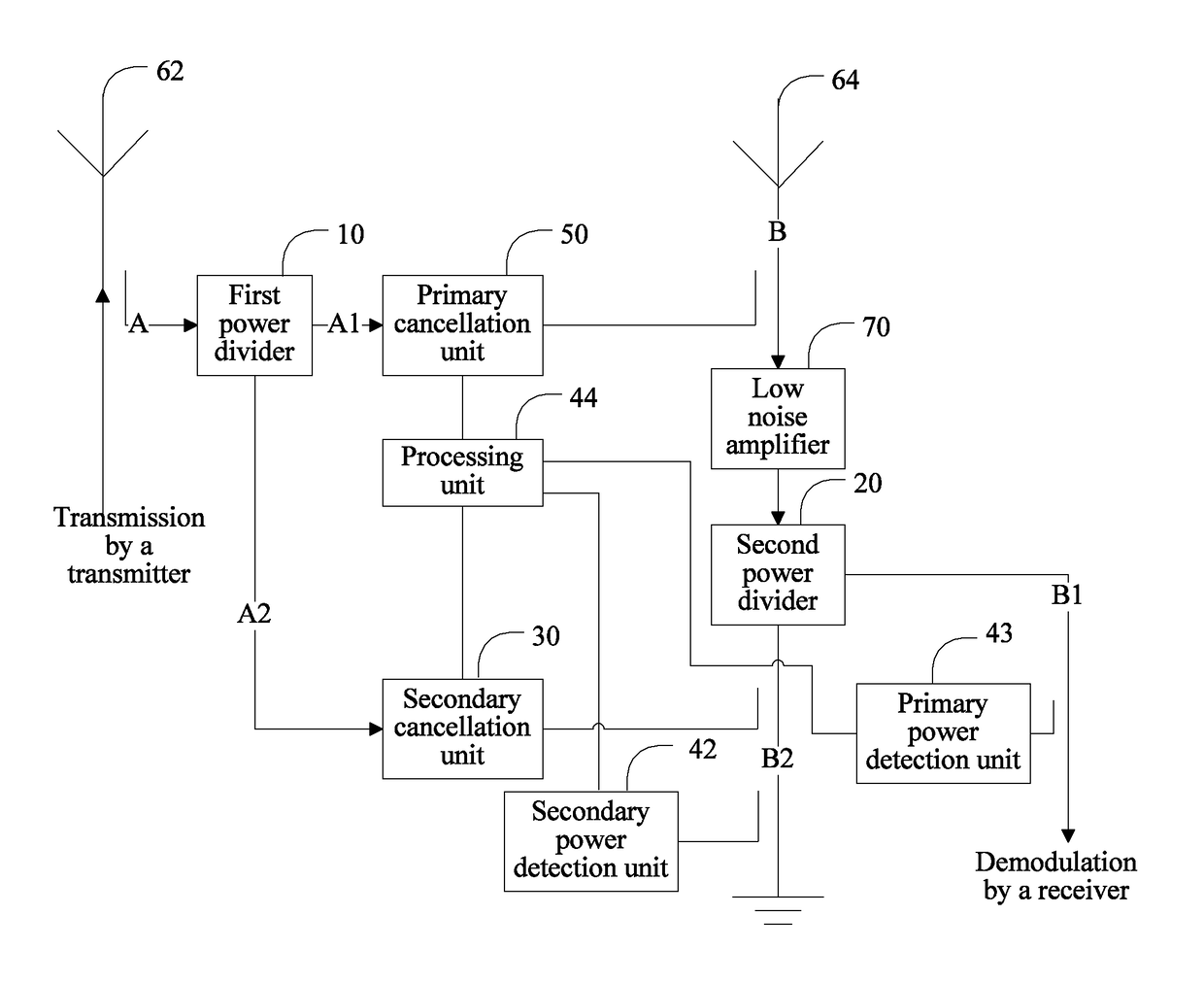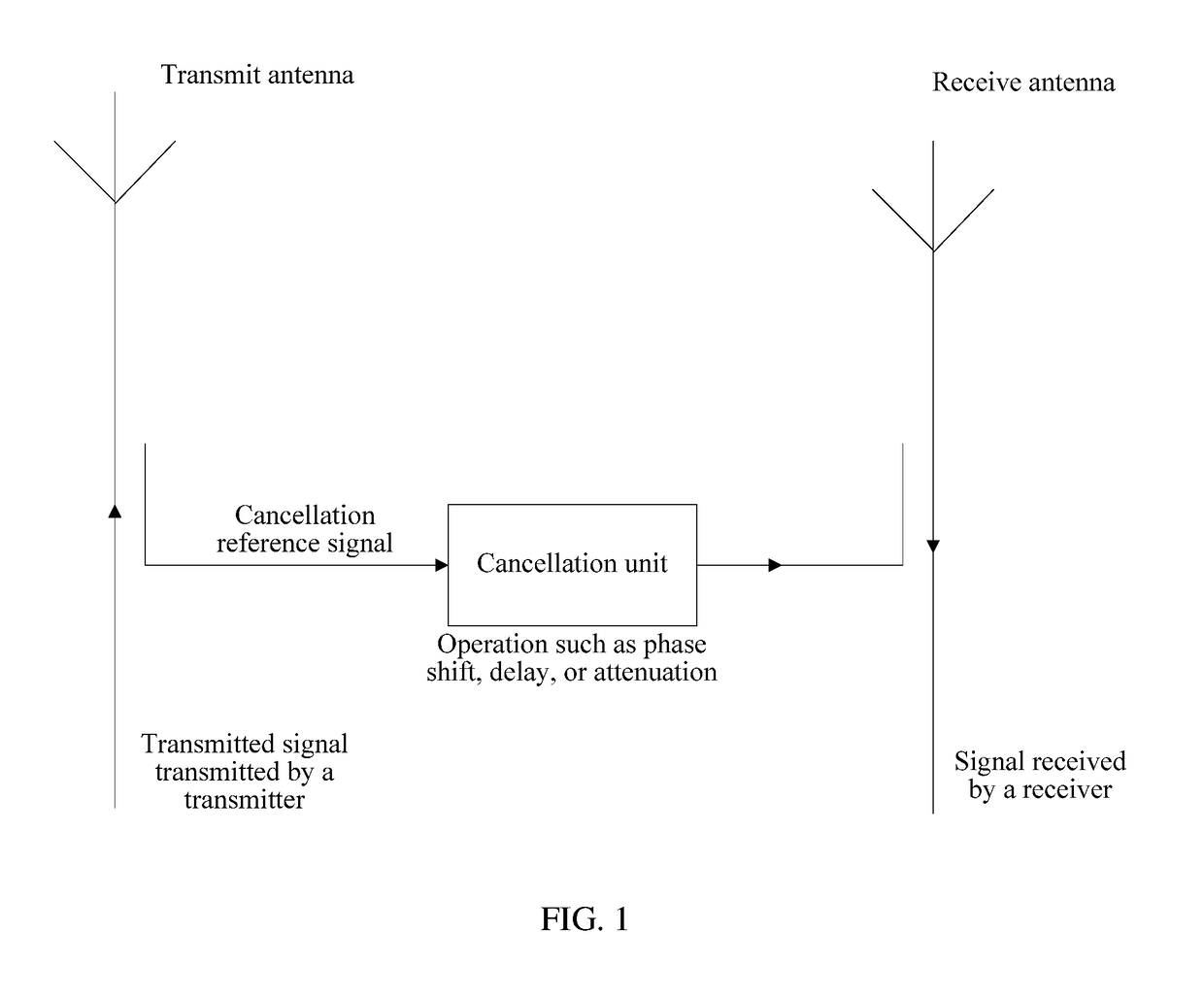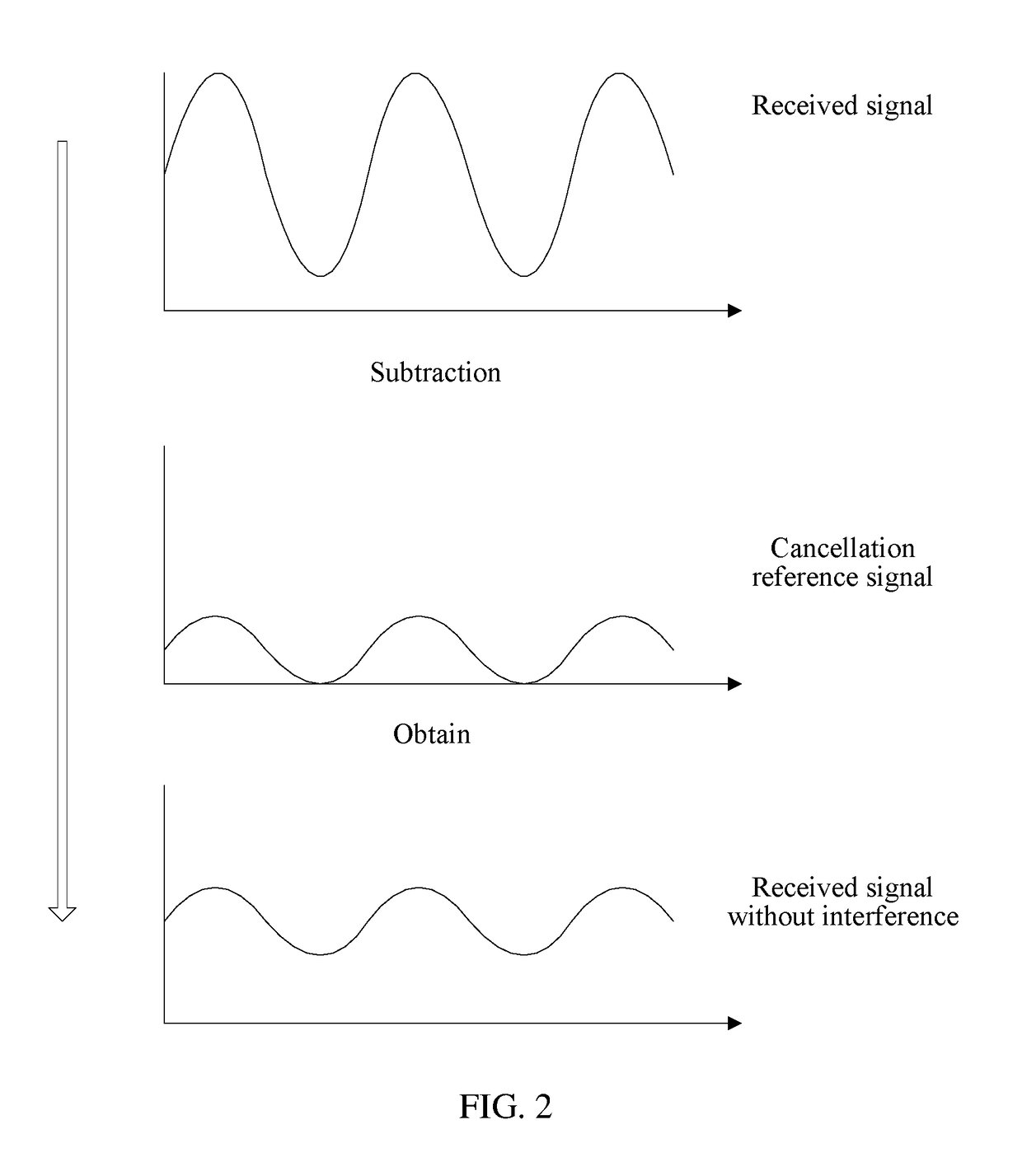Interference signal cancellation apparatus and method
a signal cancellation and interference technology, applied in the field of communication technologies, can solve problems such as communication system instability, interference suppression and cancellation, and increase a bit error ra
- Summary
- Abstract
- Description
- Claims
- Application Information
AI Technical Summary
Benefits of technology
Problems solved by technology
Method used
Image
Examples
Embodiment Construction
[0022]The following clearly describes the technical solutions in the embodiments of the present disclosure with reference to the accompanying drawings in the embodiments of the present disclosure. Apparently, the described embodiments are merely some but not all of the embodiments of the present disclosure. All other embodiments obtained by a person of ordinary skill in the art based on the embodiments of the present disclosure without creative efforts shall fall within the protection scope of the present disclosure.
[0023]In an interference cancellation method in a conventional technology, a noise power may be temporarily increased when a phase, a delay, or an attenuation degree of a cancellation reference signal is adjusted, and consequently a communications system is unstable. To resolve the foregoing technical problem, an interference signal cancellation apparatus of a first architecture is particularly provided. As shown in FIG. 3, the interference signal cancellation apparatus ...
PUM
 Login to View More
Login to View More Abstract
Description
Claims
Application Information
 Login to View More
Login to View More - R&D
- Intellectual Property
- Life Sciences
- Materials
- Tech Scout
- Unparalleled Data Quality
- Higher Quality Content
- 60% Fewer Hallucinations
Browse by: Latest US Patents, China's latest patents, Technical Efficacy Thesaurus, Application Domain, Technology Topic, Popular Technical Reports.
© 2025 PatSnap. All rights reserved.Legal|Privacy policy|Modern Slavery Act Transparency Statement|Sitemap|About US| Contact US: help@patsnap.com



